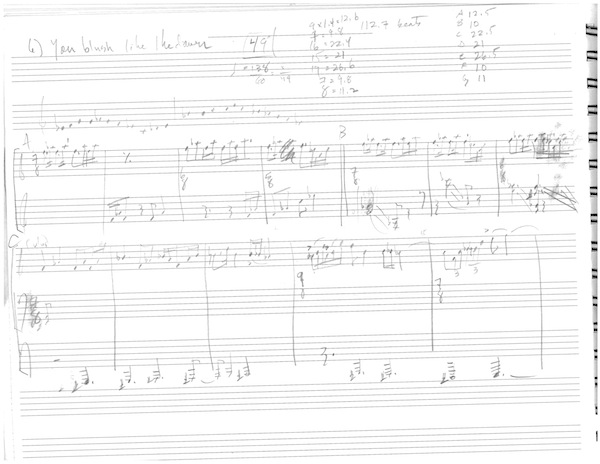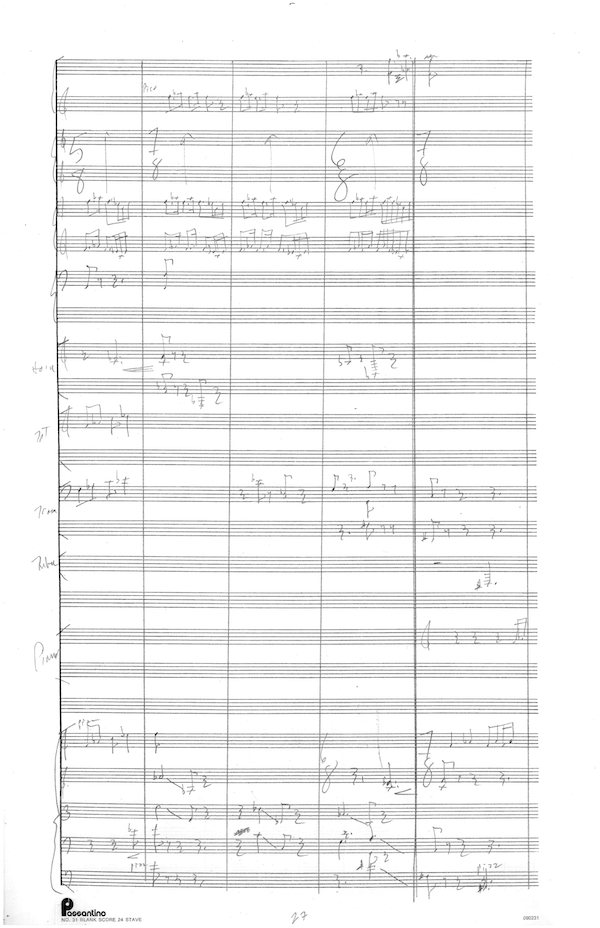“You blush like the dawn”
In a much less profound way, I’ve been dealing with this idea of surprise and, more specifically, being open to the idea of surprise, since I resumed work on O nobilissima. It can be disconcerting to work a composition project fairly steadily and then take a break. You lose momentum, and for someone like me, who does fairly little in the way of sketching, it’s possible to literally forget what you meant to do and lose the thread of your composition. So, as I’ve been picking up the threads of my composition, I’ve been trying to allow surprises to guide the piece.
One of the surprises I made is that the tempo I had chosen for the sixth section of the piece, as I had laid it out in April, is much too fast. When I returned to continue sketching this section (which I had just begun a few months ago), I reduced by initial quarter=138 to quarter=112, which is quite a bit slower but allows the fast notes to speak more articulately. This is not merely a consideration for a college orchestra–any large ensemble would have difficulty navigating the rhythmic gestures I was imagining at a fast tempo. This is one of the lessons I’ve learned from composing many orchestra pieces over the past twenty years–often, the key to unlocking a particular musical moment is the correct tempo, which often resides in a fairly narrow window. When you’re dealing with multiple layers of musical material, played by 70-80 musicians, there’s a world of difference between 112, 120 and 126, for example.
Perhaps the other thing worth mentioning here is that this section is unique in the composition in that it is not really trying to depict a poetic image from Hildegard’s text. Here, the phrase is “you blush like the dawn,” which is lovely. There are a few “blushing” gestures in the strings and trombones, manifested in little glissandi, but essentially, this is a section of the piece that just needs to build up momentum and “cook” a little, as I like to say. So far, the piece hasn’t really been driven by a quick pulse, even though there have been at least two episodes that feature fast-moving notes. So, intuitively, I know that the music is ready to move forward in a way that it hasn’t thus far.



Leave a Reply